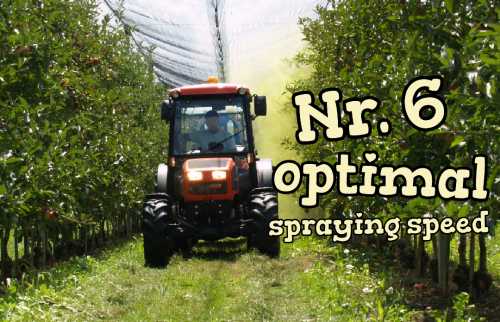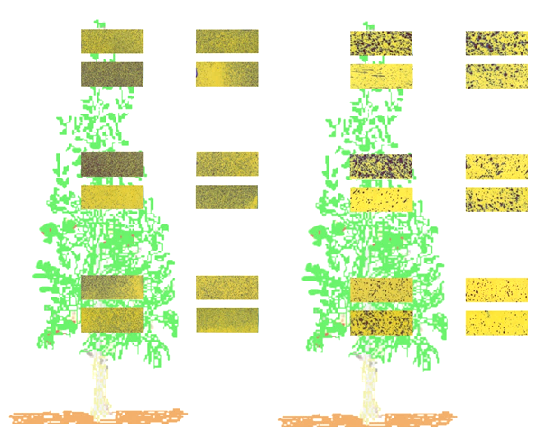
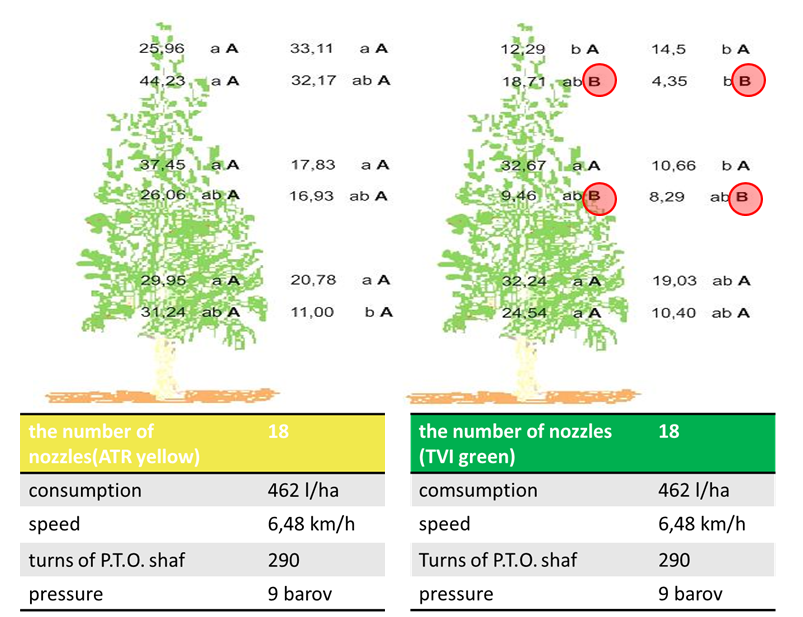
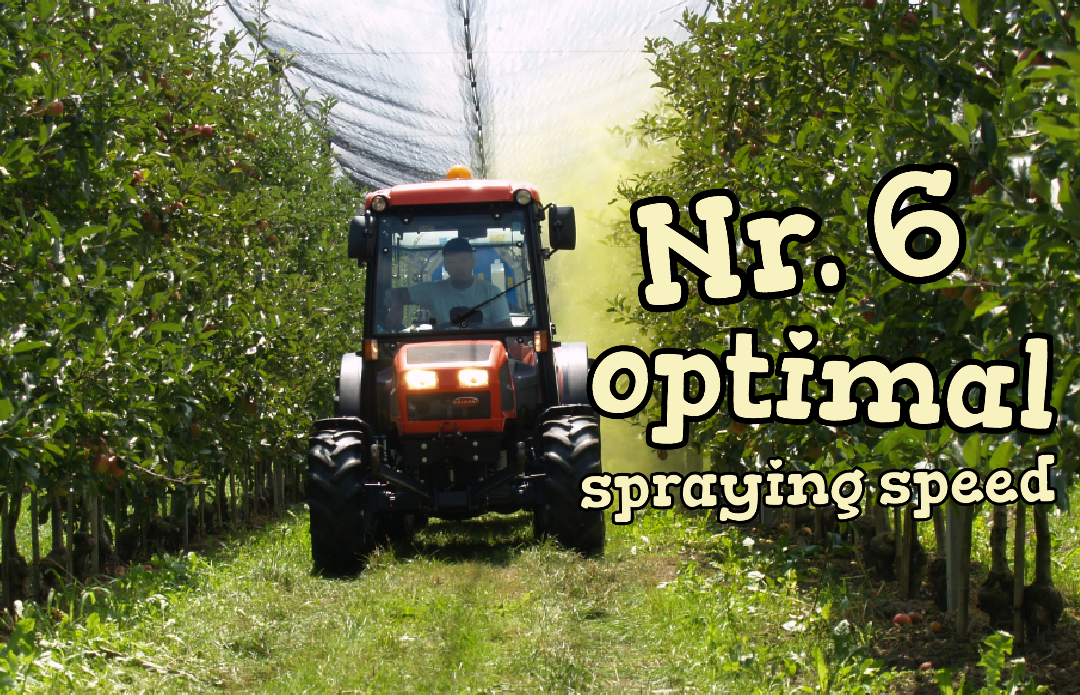
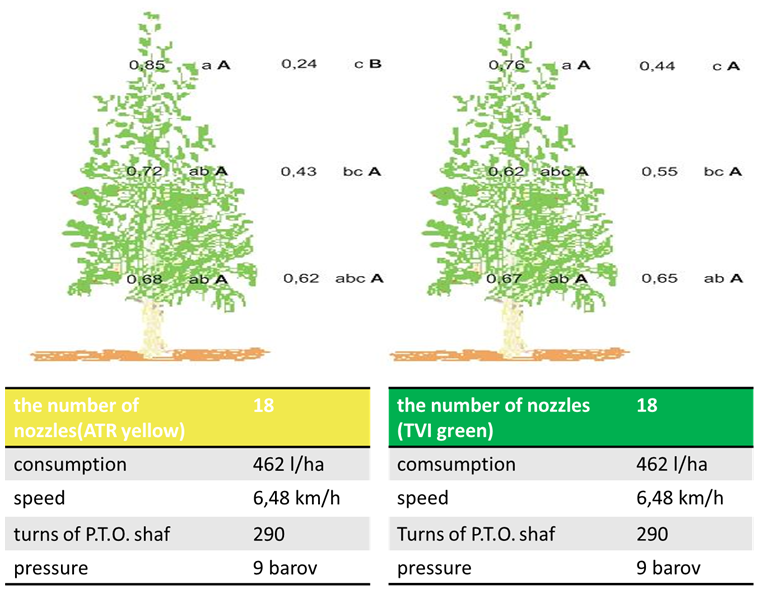
Comparison of nozzles in cultivation Gala
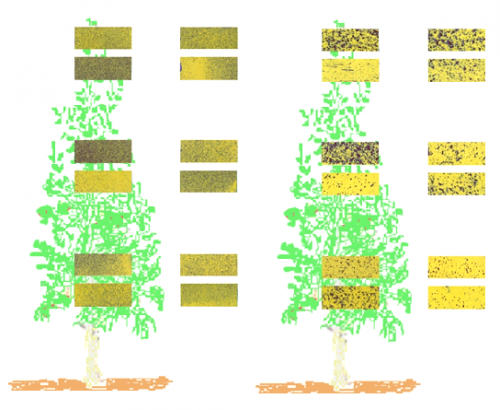
Pictures (left and right) show WSP in cultivation Gala at working speed 6,4 km/h. Left tree represents WSP with use of ATR yellow nozzle, right picture represents WSP with use of anti-drift nozzle Albuz TVI green. Anti-drift nozzles produce bigger droplets, which can be seen in the picture on the right. In both cases we can see a high number of droplets on WSP, which indicates that the deposit is very good.
Comparison of deposit quality with analysis of coloured tracer.
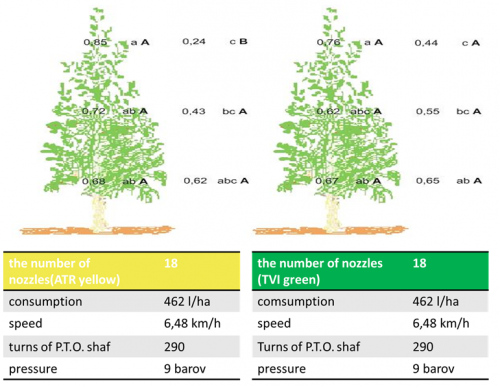
Normalized deposit (Gala, double axial ventilator, left tree ATR nozzle right tree TVI nozzle). Small letters represent values in different spots of tree with the same working speed, which differ from each other according to the Turkey HSD test (a < 0,05). Capital letters with different fonts represent significantly different values in the same spot of the same tree with 2 different nozzles.
The best deposit when using ATR nozzles in cultivation Gala (left) was achieved in spot 6, all other spots also had a very good deposit. The deposit was also the best in spot 6 when using TVI anti-drift nozzle (right), spots 1 and 2 also had a very good deposit. The worst normalized deposit was in both cases achieved in spot 5. Statistical comparison showed that the deposit with anti-drift nozzle was slightly better. In other cases, statistically there was almost no difference between both type of nozzles.
According to achieved normalized deposit, we can state, that in the settings of the sprayer were optimal (air capacity) and prevented drift from the outer part of tree crown.
Deposit results with use of water sensitive papers (WSP).
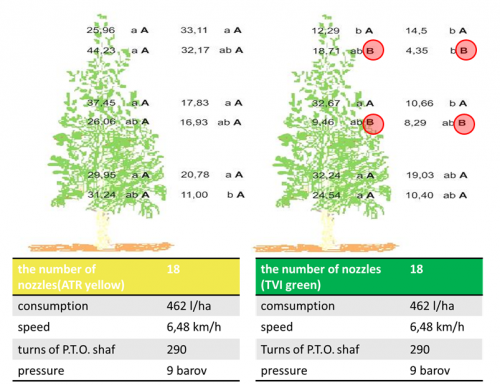
WSP Coverage rate (%) data. (Gala cultivation, double axial ventilators, left tree yellow ATR nozzle, right tree green TVI anti-drift nozzle, lower set of data -bellow, upper set of data above). Small letters represent values in different spots of tree with the same working speed, which differ from each other according to the Turkey HSD test (a < 0,05). Capital letters with different fonts represent significantly different values in the same spot of the same tree with 2 different nozzles.
Picture (right) shows good coverage on the upper side of WSP in spots 2 and 4 (inside the tree crown), spot 1 is also very good. The lower part of WSP has also a good coverage in spot 2. The worst coverage can be found in spot 5.
When comparing statistical results achieved with both nozzles, we can state that the normal nozzle (ATR) achieved better results in all spots monitored. Our test also showed that with use of anti-drift nozzles we can achieve a similar deposit as with normal ATR nozzles. In case of a “green wall” with lower density the deposit is a little bit worse.
When using anti-drift nozzles with increased speed we have to pay attention to weather conditions, temperature, wind, humidity. With all this factors in mind we can achieve even better results.
Are You eager to learn what were the results like, when we used ant-drift nozzles in Jonagold cultivation? Follow us and learn about this in next issue- issue nr. 7.
Zupan Sprayers team wish you nice and successful weekend.
Sep 09, 2016
